Published On October 1, 2015
SINCE PROTO’S LAUNCH 10 YEARS AGO, its opening pages have always taken a brief intermission from documenting “medicine’s leading edge” to look back at one of its past successes—the formulation of aspirin, the publication of Gray’s Anatomy, the advent of CPR. The legacies of some of these medical milestones, like the lobotomy featured in this issue, were destined to be short-lived. Others define an era.
How will the past 10 years of medicine be remembered? Ask a room full of researchers, and you’re likely to get just as many answers. But certain themes have crossed Proto’s pages time and again in the past decade. The plunge in genomic sequencing costs, for instance, has ignited years of new research into the genetic roots of disease. But that genomic information, combined with the push to digitize patient records, has left medicine awash in data—and the sometimes paralyzing problem of harnessing it. The fruits of genome research have also led to cures, but their expense sometimes strains the limits of what the system can afford, part of a larger trend in hospital costs that is leading policymakers to propose sweeping new ways to reach patients and measure their care.
These are only a few forces that have shaped the past decade of medicine. What will the future remember? Proto will bring readers the devices and insights that guide the next 10 years.
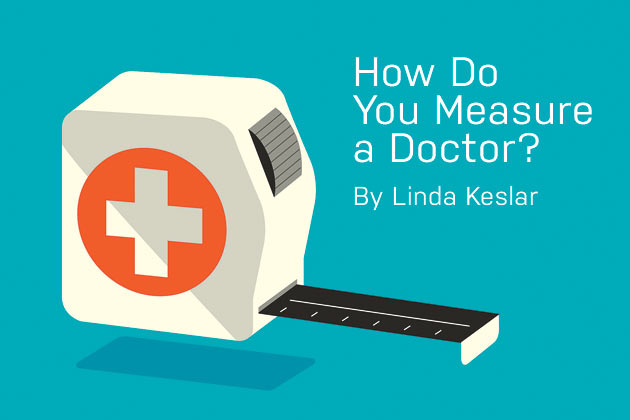
MANAGING MEDICINE’S PRICE TAG is a grim necessity in an era of accelerating costs. A solution that everyone could sign on to would be to make the process leaner, delivering the same—or better—results for less money. This was a stated goal of the Affordable Care Act, the most sweeping medical policy legislation of the past 10 years—and probably of the past 50, since Medicare became law in 1965. But at the heart of the legislation’s approach, beneath the metrics and new models, lies a related puzzle that is much older than the current crisis. How do you measure good medical care?
Two approaches funded by the ACA have tried to answer this. Pay for performance—P4P—uses the logic of financial incentives. Better results for patients that cost less should be reimbursed at a higher rate. While P4P was already generating interest when Proto launched (“The Quest for Quality,” 2006), the problems it faced then haven’t gone away. How can medical practitioners, especially in small practices, manage the cost and effort of collecting the data needed to measure themselves? Should performance data about doctors and hospitals be published? Are these accurate measures of quality, and who should do the measuring?
A second approach—accountable care organizations, or ACOs—proposes a new way to group doctors, hospitals and other providers into “accountable units.” ACOs are responsible for the quality and cost of treating their patients, with financial rewards for good care at lower costs. As part of the ACA’s guidelines, ACOs must meet several dozen quality targets, but tracking those poses some of the same challenges of data collection that the P4P approach faces (“Time to Regroup,” 2011).
Momentum for P4P, ACOs and related approaches is growing steadily. Sylvia Mathews Burwell, Secretary of Health and Human Services, announced in early 2015 that by the end of 2016, 30% of Medicare payments should be based on models that don’t pay a flat fee for service. Half of the system must use non-fee-for-service models by the end of 2018. Because Medicare buys more health care than any other purchaser, its goals “matter a lot,” says David Cutler, a professor of applied economics at Harvard University’s Kennedy School of Government, who notes that leading national insurers are adopting similar changes. “I think this is going to result in the most difficult time to manage health care of any period we’ve ever seen,” he says.
Are patients seeing the benefits? Studies show mixed results. There’s only limited evidence that P4P programs greatly improve outcomes for patients, and even less that they ratchet up efficiency or reduce costs. And though federally funded ACOs have shown encouraging results during their first few years, both kinds of programs face design challenges in providing appropriate financial incentives and in measuring quality, according to Andrew Ryan, associate professor in Health Management and Policy at the School of Public Health at the University of Michigan.
The focus on quality has also come to bear on individual physicians, and how to objectively measure their performance. Medical boards have increased their mandates for recertification, a move that has sparked heated debate about how effective recertification tests really are (“Why Recertify?” 2010). On the topic of aging doctors, many hospitals are exploring ways to determine how long physicians can safely continue to see patients—and what to do when it’s time for them to stop (“Out of Practice,” 2015). This increased scrutiny has also fueled ongoing debates about the benefits and drawbacks of releasing public report cards and other consumer rating systems evaluating hospitals and physicians (“Are Public Report Cards That Evaluate Individual Physicians a Good Thing?” 2008). All of these come to the fore in an atmosphere in which there is more and more pressure to control quality and increase transparency.
As if that weren’t enough, consumer medical websites devoted to informal reviews of doctors and social media also influence public perceptions of a doctor’s reputation and carry ethical and legal risks for medical professionals (“Don’t Tread on M.D.,” 2009; “Policing Physicians Online,” 2011). Some doctors seem to be opting out of this brave new world, with job turnover and retirement rising to the highest rates ever recorded. “What is happening requires a totally different approach to practicing,” says Ryan. “And that’s something a lot of physicians don’t like.”
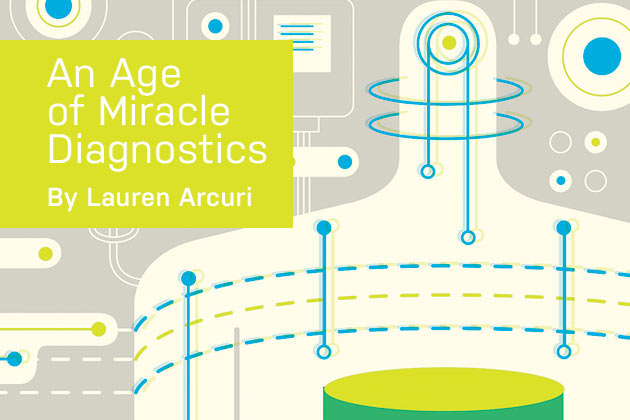
A DIAGNOSIS IN HIPPOCRATES’ DAY was formed partly by studying a patient’s dreams and where the stars stood when she became ill. Each generation in medicine inherits and defines its diagnostic tools, and the genomic revolution—the ability to quickly and cheaply sequence a person’s genetic make-up—has led to the most dramatic advances in diagnosis during the past 10 years. But it is far from the whole story, and technologies for detecting disease have paved the way to earlier and more effective treatments.
At the time of Proto’s first issue, researchers had begun to find genetic roots for a range of conditions, including mental illness. Gene variants were linked to a predisposition to depression, and to differences in activity in the amygdala, a brain region that processes fear. A gene known as neuregulin 1 offered the promise of unraveling the genetic roots of some forms of schizophrenia (“The Scarlet Gene,” 2005).
And genetic codes in the cells of cancerous tumors could predict how that cancer might respond to particular types of treatments. One brain tumor, for instance, might be vulnerable to chemotherapy, while another could require radiation (“Medicine Gets Personal,” 2006). Discoveries of connections between genetic variations and diseases poured in. Mutations in the BRCA1 or BRCA2 gene put women at higher risk of breast cancer. Researchers also discovered that women with the disease who produce an excess of the protein HER2—because of another mutation—may respond best to a drug called Herceptin, while people with an EGFR mutation in lung cancer cells are likely to benefit from treatment with Tarceva (“The Problem With Biomarkers,” 2012).
The successes of genomic sequencing and its declining costs crossed into the consumer realm with the mail-order genome, a service that offered to derive a genetic profile from a swab of saliva for only $999 (“Your Genome, Yourself,” 2008). But the links between most genes and particular diseases are only beginning to be understood, and in 2013, the Food and Drug Administration ordered the manufacturer of that kit to discontinue marketing the product. (Users can still buy the test and download raw data and ancestry information.)
While genome sequencing sent ripples throughout the field of diagnostics, other new methods were also quietly gaining ground. Hippocrates may have analyzed the burps of his patients, but breath analysis took a leap forward with advances in gas chromatography and mass spectrometry. Such analysis might eventually help in diagnosing types of cancers and other maladies (“In One Breath,” 2013).
And one emerging field of blood analysis may change how early and how specifically cancer can be diagnosed as well as treated. Mehmet Toner, a member of the surgery department and founding director of the BioMicroElectroMechanical Systems Resource Center at Massachusetts General Hospital, has spent much of the past decade refining a device that Proto first reported on seven years ago (“Studies in Miniature,” 2008). Using a technology called microfluidics to home in on circulating tumor cells in the blood, the first two generations of the device looked for specific markers to distinguish tumor cells from billions of other cells—like hunting for a needle in a haystack, Toner says. But with today’s third generation, you don’t need to know what you’re seeking, because the device is now able to remove all non-tumor cells—eliminating the haystack. The focus of current research involves prostate, breast and lung cancers as well as melanoma—the device can find prostate tumor cells in the blood and monitor a patient’s response to treatment. Various kinds of “liquid biopsies” that look for cancer in the blood are now being investigated as less invasive, more accurate tools for detecting malignancies at very early stages.
And if these and other diagnostic tools find problems for which there are not yet effective solutions? “For 20 years or so, therapeutics was ahead of diagnostics,” Toner says. “Now diagnostics has leapt ahead. We can diagnose certain genomic traits for which we don’t have treatment. But in the next decade or two, what we learn with cutting-edge diagnostics will drive therapeutics to discover new molecular targets and new drugs.”
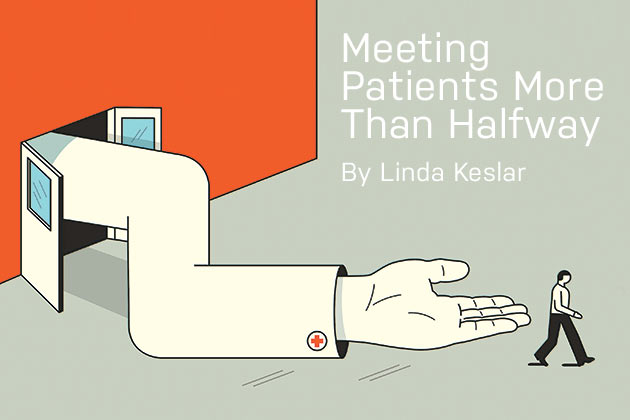
PATIENTS IN 2015 arrive at their physicians’ offices more educated and connected by the Internet and social media than ever before. Many passionately parse their diagnoses, bringing both top-level research and hearsay into conversations about their treatment. “Patients and families are now the co-creators and co-producers of their own health and health care,” says Eric Holmboe, senior vice president at the Accreditation Council for Graduate Medical Education.
But while these patients are leaning forward, others lean back, still hard to reach. Health care systems are increasingly looking for better ways to treat patients who need an extra hand in helping themselves get better.
One of the biggest disconnects between the medical profession and the people it cares for is also one of the oldest and most persistent—that patients, on their own, very often fail to follow through on treatment plans, most notably in terms of taking their medicine as prescribed (“Medication: Timely Reminders,” 2013). Technology, especially in the form of smartphone apps, may be part of the solution, but most successful programs to improve adherence depend on physicians and other caregivers to develop more frequent and effective reminders for their patients.
Noncompliance extends beyond a regimen of pills. The Affordable Care Act encourages clinicians to help patients reduce their health risks through preventive services such as screening tests, medications or other therapies. The percentage of Americans suffering from obesity alone is among the highest in the world and comes with a concurrent rise in many severe health problems (“An Epidemic of Excess,” 2006). The ACA includes several provisions that promote preventive care for this condition, and other solutions are also being explored (“The Future of Obesity,” 2009). But research shows that the proportion of patients taking advantage of such services remains low, in part because of lack of access, says Arthur Caplan, a bioethicist and director of the Division of Medical Ethics at New York University’s Langone Medical Center. But there’s a larger challenge. “We still don’t know how to change patient behavior, particularly risky behavior,” Caplan says.
That stalemate is inspiring more creative outreach. Some studies have tried behavior modeling, where a community health worker who has diabetes, for instance, might work with diabetes patients on establishing more healthy behaviors. Others have looked at economic incentives for healthy choices—in effect paying patients to stay healthy.
As the U.S. population ages, older patients present new problems in following doctors’ orders. A greater number endure multiple chronic conditions, and are often asked to keep up with complex medication regimens prescribed by several doctors that may be in conflict with one another. Studies show that this group typically has low adherence, and for many, cognitive decline makes matters worse.
But the motivation to reach patients who are hard to reach because of age, lack of understanding, socioeconomic circumstances or just inability to change to healthy behaviors also has a financial component, since the treatment of people with multiple chronic conditions now accounts for two-thirds of the nation’s health costs, according to the federal Agency for Healthcare Research and Quality. Much of that expense comes from repeated admissions to the hospital, and Medicare has begun penalizing institutions that don’t get their readmission rates under control.
In response, some hospitals and medical systems are re-engineering the way they provide care by going beyond hospital walls. Studies show that patients are more willing to discuss disease management, prevention counseling and end-of-life care when the conversation happens at home. “This is part of a new emphasis on patient-centered care, which looks more to non-hospital settings to deliver more care in the home or in community settings,” Holmboe says. And outreach to nontraditional venues may be essential for the patients most likely to cause themselves harm—including those suffering from addiction (“The Addicted Brain,” 2006) or who are homeless (“Care On the Street,” 2012). And as of last year, homeless adults have been eligible to gain access to health care services through the ACA’s Medicaid expansion provision, which also funds staffing at community health centers. All of these are critical new moves in an old playbook that looks to bring medicine to where the patients are.
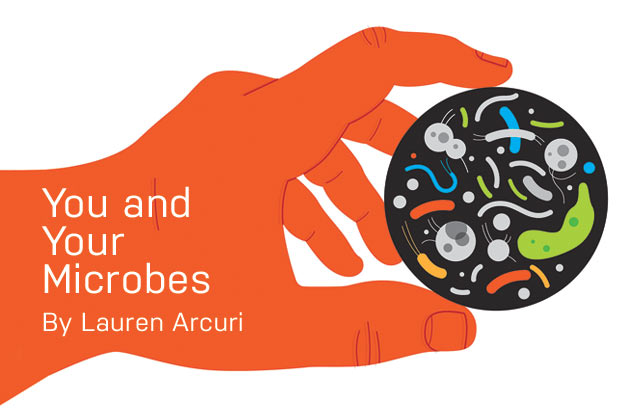
ANIMALS HAVE BEEN COEXISTING with microorganisms ever since the emergence of sponges, some 500 million years ago. But the notion that our relationship with our microbiome—the trillions of bacteria, viruses and other organisms that exist in and on the human body—can have an effect on health and well-being is relatively novel. Some of the earliest published studies on the topic began to appear about 10 years ago. In 2007, the National Institutes of Health launched the Human Microbiome Project, an ambitious effort to catalogue the microbial genome and ultimately to explore links between the microbiome and human health.
Proto first defined the microbiome for readers in 2008, and took its first close look at this emerging field a few years later (“Our Native Flora,” 2010). At the time, researchers had begun to realize that demonizing bacterial species such as Helicobacter pylori, implicated in causing ulcers, could lead to the eradication of some of our most ancient microbial allies, as well as to unintended health consequences. Further research indeed linked a lack of H. pylori to the development of childhood asthma (“Where Have All the Microbes Gone?” 2014), allergies and other conditions.
Early results from the Human Microbiome Project only added to the evidence of connections between microbiota and various afflictions. Researchers have shown that changes in gut bacteria may underlie obesity, inflammatory bowel disease, cancer and even anxiety (“Our Germs, Ourselves,” 2012), as well as asthma, allergies and depression. Last year, researchers linked microbial imbalances in the gut with celiac disease, and found such “dysbiosis” even in children with celiac who ate a gluten-free diet (“Gut Feelings,” 2014). They surmised that the wrong mix of bacteria could trigger the response in someone genetically predisposed to develop the disease.
Other researchers, meanwhile, have shown that transferring the microbiome of an obese mouse to a thin one without microbes of its own also conveys the tendency toward obesity: The thin mouse becomes obese. What’s more, says Rob Knight, a professor at the University of California, San Diego, that effect can even occur across species. Putting microbes from the gut of an obese human into a mouse not colonized by microbes, for example, will result in an obese mouse. This and other studies are starting to show that the specific makeup of bacteria in the gut may be responsible for causing particular conditions.
Applications of this knowledge are already having an impact for patients. Fecal microbiota transplants, or FMT, move feces from a healthy donor into a sick patient’s colon or lower intestine. This unconventional treatment has proven phenomenally effective—with a 94% success rate in one study—as a therapy for a debilitating bacterial overgrowth known as Clostridium difficile, which often occurs after antibiotic treatment. The condition kills some 14,000 people a year in the United States, and FMT, or a more refined alternative, may prove to be an effective treatment for other diseases that begin with the disturbance of gut bacteria.
Soon, perhaps, fecal transplant donors could be matched to recipients who can benefit most from the donor’s particular microbiome. “We are moving toward being able to use the microbiome as a detailed therapy,” says Knight. “We are beginning to be able to correlate patients’ microbiomes with their response to drugs.” That, in turn, should lead to clinical tests of gut microbes that can calibrate the treatments patients receive.
Meanwhile, commercial companies have embraced the idea of “probiotics”—nutritional supplements that are supposed to nudge someone’s microbiome into healthier territory. When Proto reported on these products in 2010, there was little evidence supporting their efficacy, and researchers didn’t know which preparations, if any, were most beneficial. Yet whereas most early research was funded by probiotic manufacturers, the number of academic studies on probiotics has increased dramatically.
Having effective treatments that could restore balance to a microbiome, says Knight, could lead to a time in the not-too-distant future in which clinicians not only track patients’ microbiotic health, but are also able to use what they learn in prescribing therapies to help combat everything from gastrointestinal complaints to cancer.
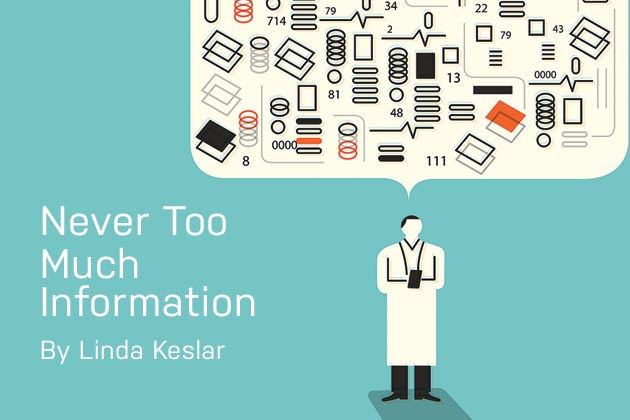
IN 2005, researchers had made a very good start at figuring out how the billions of pieces of human genetic material fit together. But the sequencing process was enormously expensive and there were only a few hundred sequenced genomes, too small a pool to look for genetic mutations that might be linked to particular diseases. At the time, health data for research about large populations was hard to come by in general, because fewer than one in six major academic health centers—and very few physicians’ practices—kept computerized clinical information about patients.
Advances in these two areas ushered in a new era. Hospitals and practices moved en masse to digital recordkeeping, prodded by legislative incentives in 2009. And the streams of data inside the genomes of humans, bacteria and a wide range of other organisms became much easier and cheaper to unlock. Today, researchers have access to tens of thousands of patient genomes to cross-check against health histories, and cancerous tumors can be typed for their genetic makeup to guide treatment.
These terabytes of new data have mostly been a boon, complicated only by the challenges of organizing and mining so much information. Indeed, the relatively new field of biomedical informatics has begun rapidly expanding to develop efficient, accurate tools to handle the deluge. Software programs such as AEGIS (automated epidemiological geotemporal integrated surveillance) were developed to sift through caches of patient histories to reveal hidden patterns—showing, for example, that the very young were instrumental in spreading the flu, leading the Centers for Disease Control and Prevention to begin recommending flu shots for preschoolers (“Digital Gold,” 2009).
Bioinformatics researchers have also kept tabs on new drugs once they’ve hit the market. Actively monitoring not only health records, but also social media—blogs, Facebook and other online communities—has been useful in exposing potentially harmful effects that might show up only after the drugs are in widespread use (“On the Trail of Drug Risks,” 2013).
But to take advantage of these possibilities, data must be input correctly and deftly sifted. In practice, electronic health record systems have often proved to be clumsy, error-prone and difficult to navigate. The future may lie with artificial intelligence (AI) programs that sort through data with an eye for logical connections. QPID (queriable patient inference dossier), an AI search program now used by 7,000 clinicians, helps physicians meaningfully navigate the deep pool of data in the typical electronic record (“Taming the Electronic Medical Record,” 2015).
Other AI tools aid doctors in staying current with the latest medical knowledge, another source of ever-accumulating data. Such decision-support programs can help clinicians learn how thousands of patients fared on particular therapies and aid them in developing new treatment plans, and can also suggest relevant new articles to researchers at a crossroads (“Doctors in the Machine” and “Rise of the Robot Scientists,” 2015).
As medical big data leaves an ever-bigger footprint, biomedical researchers and software engineers will continue to work together to mine and analyze the mountains of information generated by the human body. Isaac Kohane, chair of the new Department of Biomedical Informatics at Harvard Medical School, foresees a future in which an ecosystem of apps becomes indispensable, enabling doctors to use EHR data in a way that delivers precise, individualized care to their patients.
Stay on the frontiers of medicine
Related Stories
- The Changes We've Seen
Proto looks at trends in health care during the last 10 years.